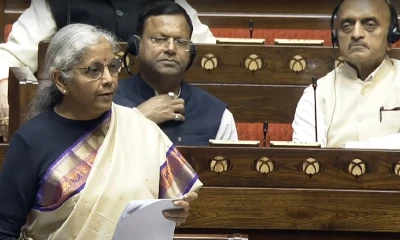Edited by Deepali Verma
The NDA government led by Prime Minister Narendra Modi made a decision to not bring out a white paper in 2014 when it took helm at the Centre despite the economy being in a “fragile state” at the time.
A decade later, it has chosen to do so as the economy has now stabilised and is on a recovery and growth path. The government deems it necessary to place in the public domain the seemingly insurmountable challenges that were left behind as a legacy by the UPA Government.
“Our government did not bring out a white paper on the poor state of affairs then. That would have given a negative narrative as well as shaken the confidence of all, including investors,” said the White Paper on the Economy, which was tabled by finance minister Nirmala Sitharaman in Parliament on February 8.
At the time, it was necessary to give hope to the people, to attract investments both domestic and global while building support for the much-needed reforms, said the White Paper, marking that the government believed in ‘nation-first’ and not in scoring political points.
Drafting a critique of the UPA government, the 60 page document is split into three part, that is, the macroeconomic situation of Bharat under the UPA government; current status of the various corruption scams of the UPA government; and how the NDA government restructured the economy and rebuilt the country’s image putting it “from fragile five to top five” economies of the world in ten years.
“The UPA Government had failed miserably to ensure economic activities. Rather, the UPA Government created hurdles which held back the economy,” read the paper. “The UPA government inherited a healthy economy ready for additional reforms, but managed to make it non-performing in its 10 years,” it said.
It also brought to light the differences that the NDA government could make in the last decade and said, “We hope to build on it in the next 25 years”.
In totality, the white paper has taken in consideration 35 parameters to compare “then” or the 10 years under the UPA government and “now” which is the decade under the NDA government. These parameters are those relating to the macro-economy like inflation, GDP growth rate, foreign direct investment; those relating to physical and digital infrastructure such as the number of airports and cities with metro rails; and lastly those relating to secure future and ease of living.
What is a White Paper?
A ‘white paper’ is an informative report marking government policies, achievements and critical issues. In government protocols, colour-coded distribution is a norm. As per Stanford Law, the colour white is specifically denotes public access. The aim of this global concept is to transparently communicate policies as well as engage citizens in the decision-making process.
White Paper vs Black
Recently, Congress had released a black paper on the Narendra Modi government’s failures, that dealt with economic, social and political injustices in the last decade. The 54-page document, titled “10 Saal Anyay Kal”, was released by Congress president Mallikarjun Kharge at a press conference in the national capital.

















